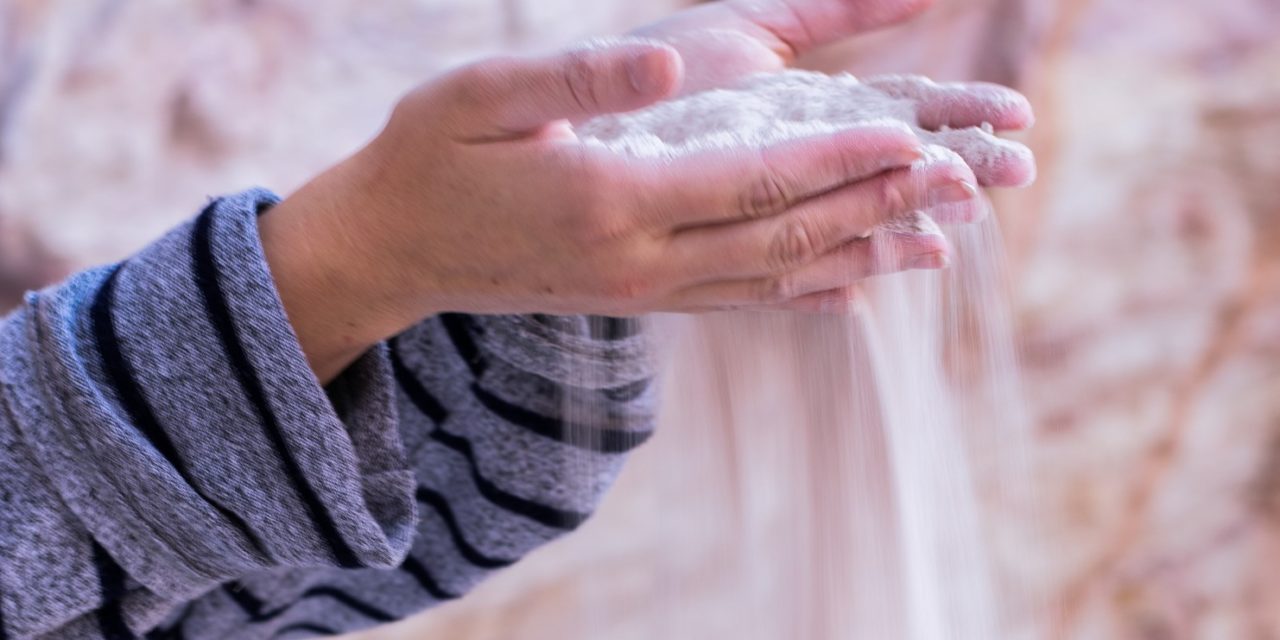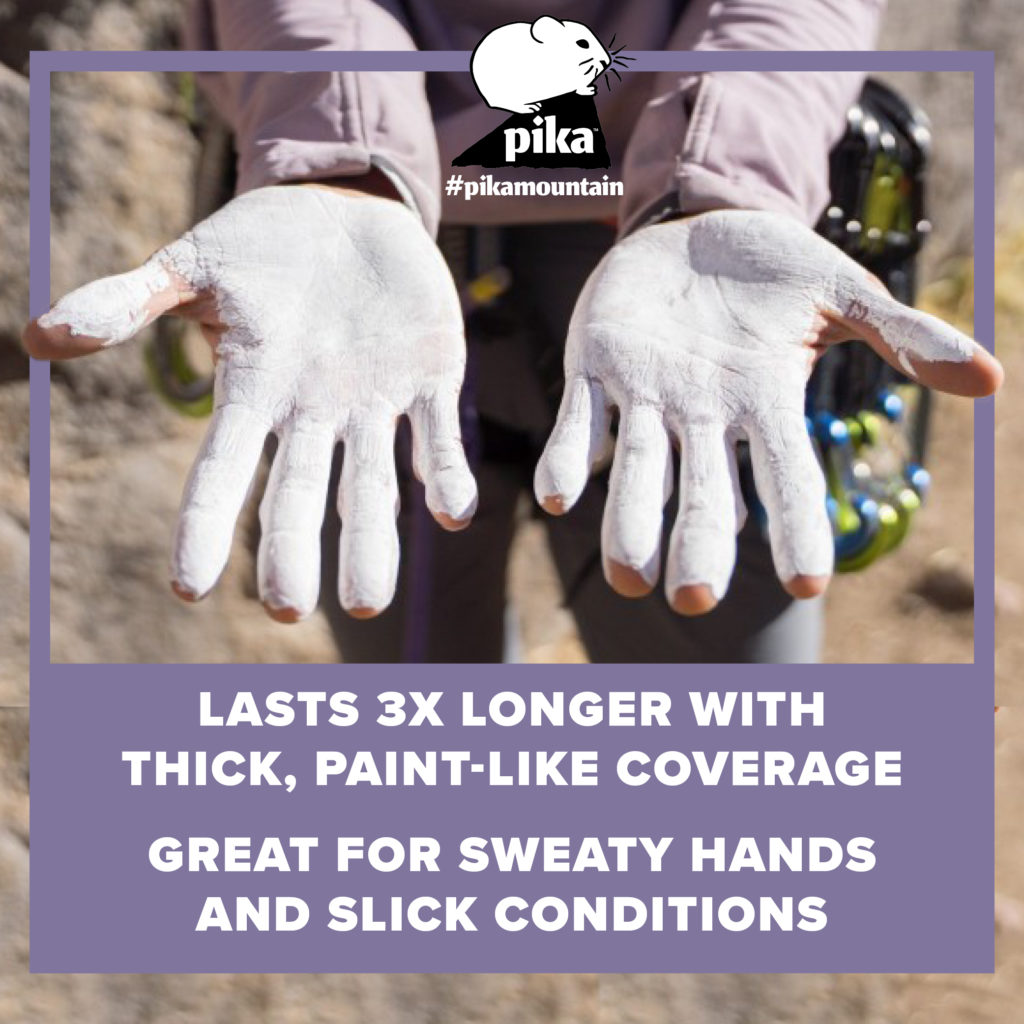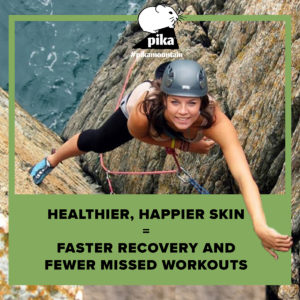Climbing chalk is one of our climbing gear’s most underappreciated and undervalued pieces. It does, however, have one of the largest environmental impacts of any of our products. With Earth Day approaching, I thought it would be a good time to talk about the detrimental effects of climbing chalk on the environment and what we can do about it.
How is Chalk Mined?
Let’s start at the beginning and look at how chalk is made and why it’s important. Magnesium carbonate, which is mined from the mineral dolomite, is used to make powdered chalk.
The extraction process starts with powerful water jets blasting away at the rock and extracting the dust. The ore is then ground into powder and applied to a liquid slurry for drying, but this cools the slurry too much, reducing the number of particles it can hold, resulting in several larger pieces remaining in the finished product (the powdered chalk). Centrifuges, or filters, are then used to isolate the crystals.
They’re then crushed into pieces or sold as granules at the end. Contamination and habitat destruction are common side effects of heavy dolomite mining. Airborne magnesium particles coat the surrounding landscape, creating a detrimental effect on both plants and animals that depend on these ecosystems for their survival.
How Much Chalk do Rock Climbers Use?
While it’s difficult to tell with certainty, we can make an informed guess. Globally, as of 2020, there are about 25 million rock climbers. I used to use three to four 16 ounces (0.6 kilograms) bags of chalk each year before switching to liquid chalk. Let’s assume that the average climber uses only two bags of chalk a year. This means that the climbing community uses around 50 million pounds of chalk each year on average. 25 tons is a significant amount of chalk!
How Does Powdered Chalk Negatively Impact Rock Formations?
Loose or powdered chalk can endanger our environment in a variety of ways. Most of these are moderately alarming in and of themselves, but they hardly justify outrage. However, when you add them all up and multiply by the 25 million climbers worldwide, it’s clear to see how we might be facing a full-fledged crisis in the not-too-distant future.
Permanently Defaces Our Natural Landmarks
Powdered chalk is well known for leaving noticeable residue on rock formations. Although we’d like to believe that all the chalk handprints and tick marks will just wash away the next time it rains, this is not the case. Chalk, particularly in arid regions, on certain types of porous rock, and on overhanging cliff faces, sticks to the wall like graffiti.
On many routes, these white chalk smears will never come off unless it is brushed or wiped off, which, let’s face it, is a rare occurrence. Furthermore, chalk accumulates on holds over time, so that common routes can feel so polished that they are forever changed or even virtually unclimbable. We’ve all seen even worse examples of humans defacing nature, but we’re naive to believe our chalk use is completely blameless on this front.
This is one of the main reasons popular climbing spots like the Shawangunks in New York, are starting to ban powdered chalk and only allow liquid chalk. In fact, just last month the very busy Garden of the Gods park in Colorado banned chalk completely. Chalk bans in other climbing areas are surely not far behind.
Those Not-So-Innocent Micro Spills
Mine contamination is unquestionably much worse than what we do to our local crags. However, I can’t count the number of times my own chalk bucket or bag has been knocked over, kicked, or landed on, dumping a small pile of chalk in the dirt and weeds. It happens to someone every day at busy climbing areas, I’m sure.
There isn’t much, if any, research dedicated to these types of chalk micro-spills. However, the soils and micro-habitats under and around such small chalk spills are likely to be adversely impacted in similar ways as nearby chalk mines affect the soils and ecosystems.
Destroys Local Flora and Fauna
Climbing chalk is likely to change the pH and nutrient levels on rocks, potentially affecting animals that live in, on, and around the rocks. In one study that sought to measure the impact of chalk on rock-dwelling plants, researchers discovered elevated climbing chalk levels on 65% of sampling points without any visual traces of climbing chalk. In other words, irreparable damage is being done even when there are no visible traces of chalk.
In a study published by Ecology and Evolution, researchers measured the potential impact on four ferns and four moss species in an experimental setup in a climate chamber. The experiment revealed that elevated climbing chalk concentrations had a substantial negative impact on the germination and longevity of both ferns and mosses, though the results were varying. Although there may be disputes among scientists about how much damage is being done, it is generally acknowledged that our flora and fauna are being negatively impacted.
What Can We Do to Lessen Our Impact on the Environment?
Climbing is a perfect way to stay fit, appreciate nature, and meet new friends. We can also make it a guilt-free activity if we take a few quick measures to reduce our environmental effects.
Option 1: Use less chalk
It’s one of the easiest, but also one of the most difficult improvements you can do. Chalking up is a common nervous habit that easily becomes ingrained. It’s difficult to break the habit of chalking up three times before each climb and every 30-seconds afterward. It’s difficult to break the habit of chalking up three times before each climb and every 30-seconds afterward.
In principle, reducing our use of chalk will help, but doing so in practice is difficult. Particularly when your hands are sticky with sweat, you’re halfway up a trail, and you’re clinging to a small crag or a slippery sloper. Dip back into the chalk bag for a fast rechalk before crushing the crux step and sending the rest of the route is reassuring. We can try wiping sweaty hands on clothes or a small hand towel, but that only works so well.
Option 2: Wipe down your routes or use colored chalk
You can always buy and use colored chalk that’s similar to the color of the rock you’ll be climbing on your next trip. You can also wipe down and brush off any chalk you left behind if you have a lot of time on your hands.
The only advantage of colored chalk over standard chalk is that it can reduce the vandalism of white holds and tick marks left behind on common routes. Some national parks, however, forbid chalk that does not match the color of the local rock, so it’s worth thinking about.
Option 3: Use liquid chalk
Liquid chalk isn’t flawless, but it’s a great alternative. Liquid chalk is just chalk that comes as a fast-drying cream instead of a powder. Magnesium carbonate and alcohol are the main ingredients, with a few other synthetic and/or natural ingredients added to reach the desired consistency.
You spread a tiny dollop over your palms, wait a few seconds for the alcohol to dry, and you’re chalked up and ready to climb for much longer than if you used powdered chalk.
Be sure to stay away from liquid chalks that contain pine rosin (AKA pitch, sap, pine resin, pine tar, and colophony). Pine rosin is very sticky, which can help you grip slippery surfaces, but it also severely gums up the holds. Since it is not water-soluble, it will not wash away in the rain, causing permanent damage to routes.
Where Do We Go From Here?
On the whole, rock climbing equipment companies tend to be pretty environmentally conscious. They have good products and policies. Their teams care deeply about nature. However, definitely do your homework, because some chalk companies pay little attention to the environmental impact of their products. Their lack of environmental policy enforcement and practices reflect this. That said, we can’t leave it solely up to the businesses. Businesses respond to customer demands. If, as consumers, we consistently and collectively ask for better products and practices, then that’s what we’ll get.
If you’re feeling inclined to make a change in your gear this Earth Day, Maybe give Pika Scented Liquid Chalk a try. Our unique, zero-slip formula is extra-grippy and stays on your hands for a very long time. It doesn’t easily rub off on holds or flake off to the ground. You’ll chalk up less frequently than you would by using other liquid chalks, and you’ll ultimately use a lot less chalk overall.
We’re currently offering readers of Moja Gear an exclusive 25% OFF discount. Head over to Pika.Life and enter the coupon code: MOJAGEAR25 at checkout.
Additionally, Pika uses organic ingredients whenever possible. We also use extremely pure, high-grade magnesium carbonate and 100% compostable packaging. Using high-quality, organic, and compostable materials makes our products safer for our customers, our employees, and the environment.
Additional Reading and Resources
Here are some additional articles and resources worth checking out, if you’d like to dig deeper on this topic:
- This article, by Bradley Allf of Climbing Magazine, also looks at the environmental impacts of climbing chalk.
- This article, posted by Corey Keyser to his Medium account, makes a strong case for banning climbing chalk altogether, or at very least banning loose chalk.
- Here’s some research of climbing chalk’s impact on plant life.
- This article by Conquer Your Crux compares loose or dry chalk with liquid chalk.
- This article by Paul Pennington looks at all the various ways rock climbing affects the environment, and it provides a good checklist for minimizing our impact.
This article contains buying links that are affiliate links—purchases made from them support our free content. Check out our deals page for today’s best gear sales!










